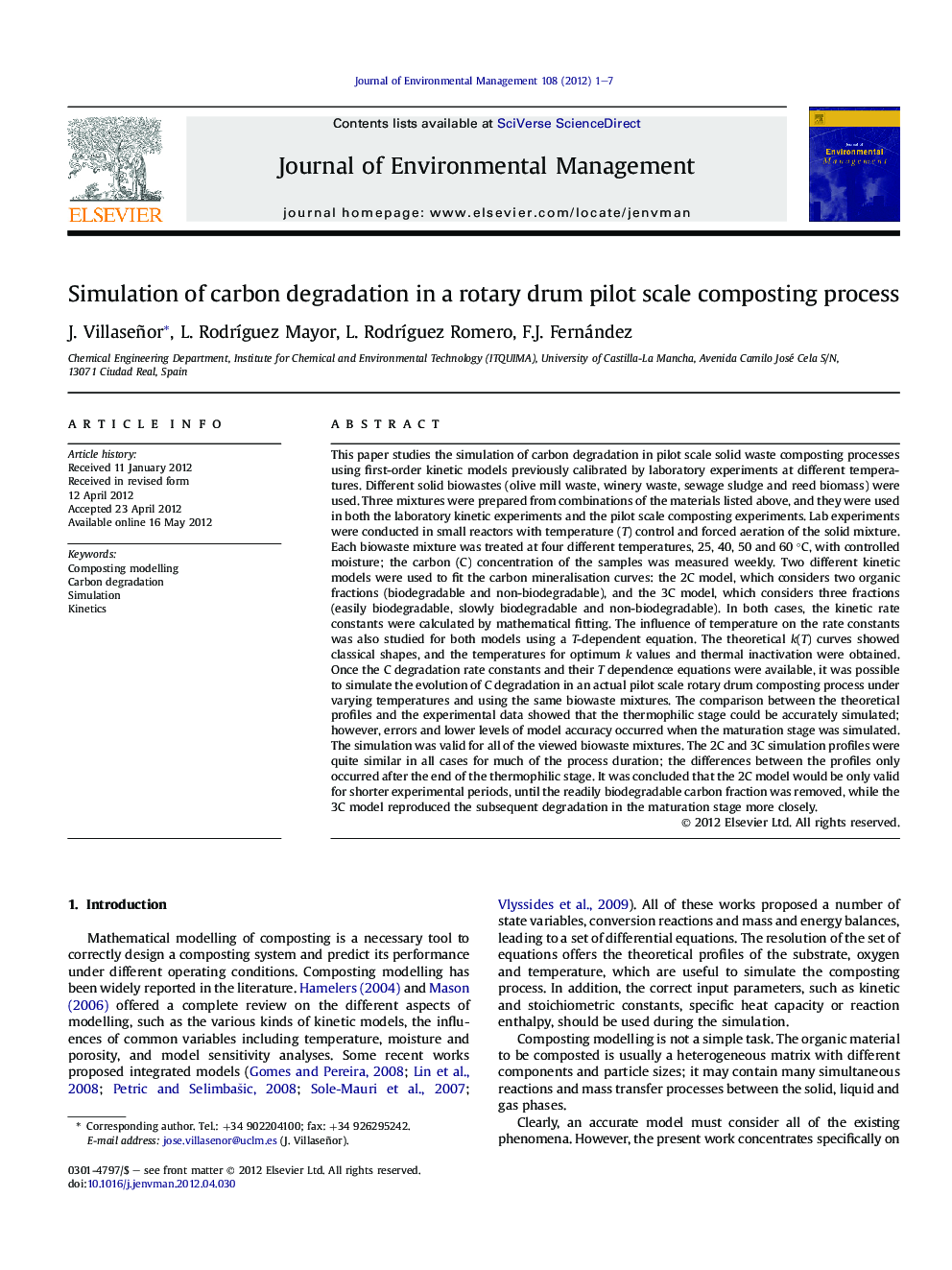| کد مقاله | کد نشریه | سال انتشار | مقاله انگلیسی | نسخه تمام متن |
|---|---|---|---|---|
| 1056762 | 1485304 | 2012 | 7 صفحه PDF | دانلود رایگان |

This paper studies the simulation of carbon degradation in pilot scale solid waste composting processes using first-order kinetic models previously calibrated by laboratory experiments at different temperatures. Different solid biowastes (olive mill waste, winery waste, sewage sludge and reed biomass) were used. Three mixtures were prepared from combinations of the materials listed above, and they were used in both the laboratory kinetic experiments and the pilot scale composting experiments. Lab experiments were conducted in small reactors with temperature (T) control and forced aeration of the solid mixture. Each biowaste mixture was treated at four different temperatures, 25, 40, 50 and 60 °C, with controlled moisture; the carbon (C) concentration of the samples was measured weekly. Two different kinetic models were used to fit the carbon mineralisation curves: the 2C model, which considers two organic fractions (biodegradable and non-biodegradable), and the 3C model, which considers three fractions (easily biodegradable, slowly biodegradable and non-biodegradable). In both cases, the kinetic rate constants were calculated by mathematical fitting. The influence of temperature on the rate constants was also studied for both models using a T-dependent equation. The theoretical k(T) curves showed classical shapes, and the temperatures for optimum k values and thermal inactivation were obtained. Once the C degradation rate constants and their T dependence equations were available, it was possible to simulate the evolution of C degradation in an actual pilot scale rotary drum composting process under varying temperatures and using the same biowaste mixtures. The comparison between the theoretical profiles and the experimental data showed that the thermophilic stage could be accurately simulated; however, errors and lower levels of model accuracy occurred when the maturation stage was simulated. The simulation was valid for all of the viewed biowaste mixtures. The 2C and 3C simulation profiles were quite similar in all cases for much of the process duration; the differences between the profiles only occurred after the end of the thermophilic stage. It was concluded that the 2C model would be only valid for shorter experimental periods, until the readily biodegradable carbon fraction was removed, while the 3C model reproduced the subsequent degradation in the maturation stage more closely.
► It is shown a simulation study of C degradation in a pilot scale composting process.
► Previous experiments calculated rate constants and the relationship with temperature.
► The simulation reproduces the thermophilic stage better than the maturity stage.
► Models and simulation results were valid for the different wastes used.
Journal: Journal of Environmental Management - Volume 108, 15 October 2012, Pages 1–7